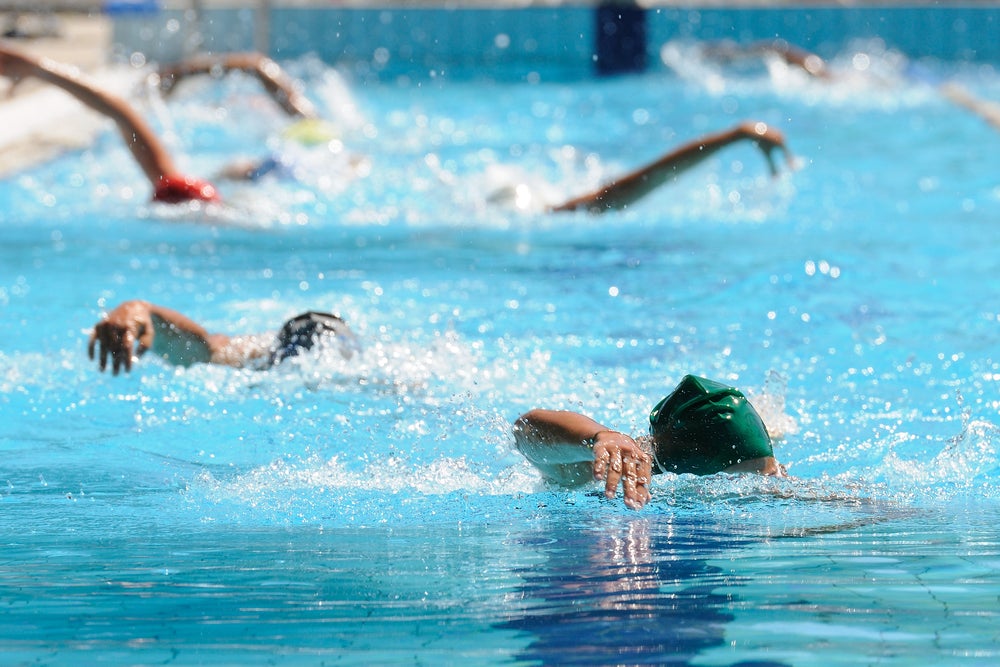6 Common Swimming Myths

Photo: <a href=http://shutterstock.com>Shutterstok.com</a>
Coach Sara McLarty debunks some common beliefs about swimming as a triathlete.
1. Freestyle is the only stroke triathletes need to know.
Freestyle is the fastest and most efficient stroke, so it will be used most of the time when completing a long-distance swim. However, every triathlete should have a “safety” stroke to use when they are tired, need to find the buoys or clear their goggles in a race. Plus, learning other strokes works different muscles and keeps things interesting.
RELATED: Advantages To Learning New Strokes In The Pool
2. You’re supposed to hold your breath underwater.
Holding your breath causes a buildup of carbon dioxide and promotes a gasping feeling. Instead, constantly exhale a steady stream of bubbles out of your nose and mouth when your face is in the water between inhales.
RELATED: How Do I Avoid Holding My Breath While Swimming?
3. If you always race in a wetsuit, it’s OK to always train with a pull buoy.
Over-training with a pull buoy will never allow you to learn how to balance your body in the water. Instead, do drills targeted on floating and arching your back to keep your body horizontal along the surface of the water.
RELATED: Pull Buoy For Beginners
4. Triathletes shouldn’t bother with kicking drills.
Quite the contrary: The kick is very important for initiating core rotation and balance for the entire body. Triathletes should practice kicking, at a low cadence, to create a stronger and more efficient stroke with their upper body.
RELATED: Are Kicking Sets That Important?
5. Swimming continuous laps without rest is an efficient use of training time.
Stroking nonstop through countless, mindless laps isn’t maximizing pool time—it’s wasting it. Every length of the pool should have a purpose that will improve technique, endurance, speed or breathing efficiency. Start each workout with a structured plan targeting specific goals to really make it count.
RELATED: In Defense Of Swim Drills
6. Bilateral breathing is only important for competitive swimmers.
Breathing on both sides is more important for triathletes than pool swimmers—especially in open water. The conditions can change at a moment’s notice: wind direction, waves and chop, blinding sunlight, etc.